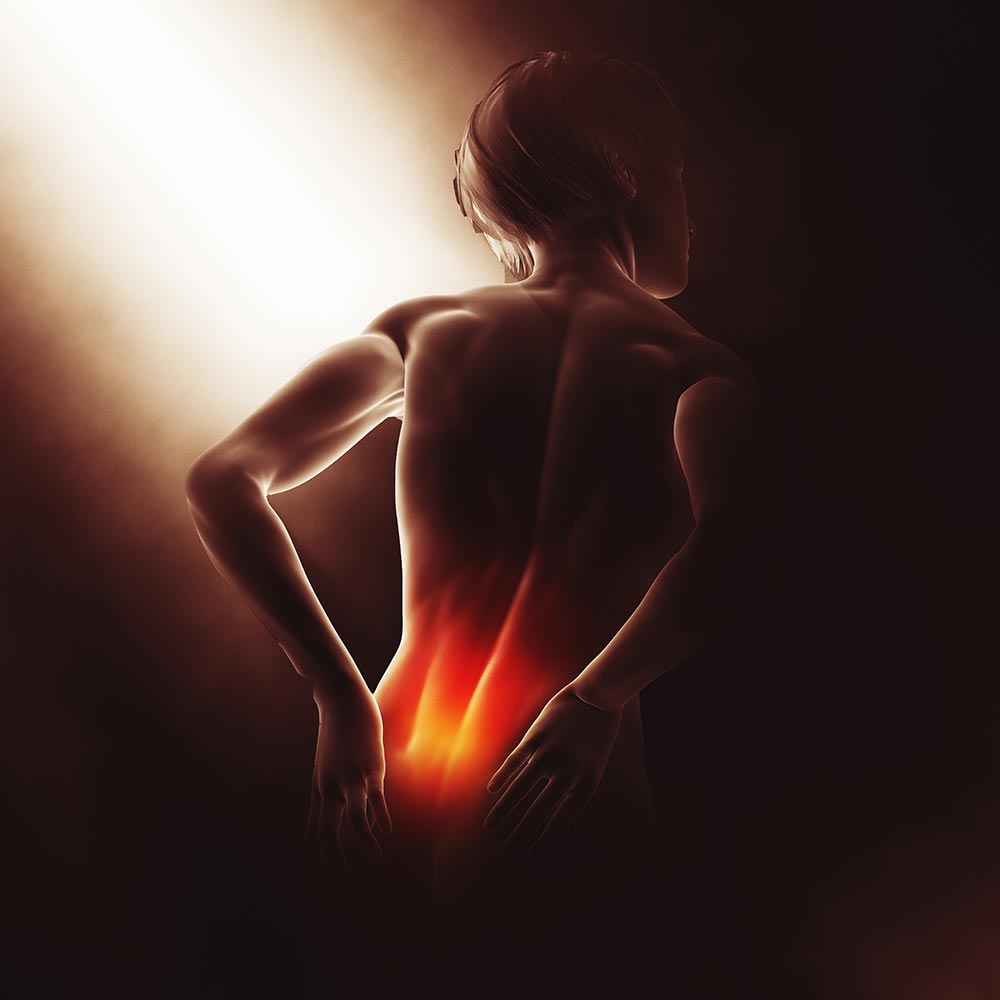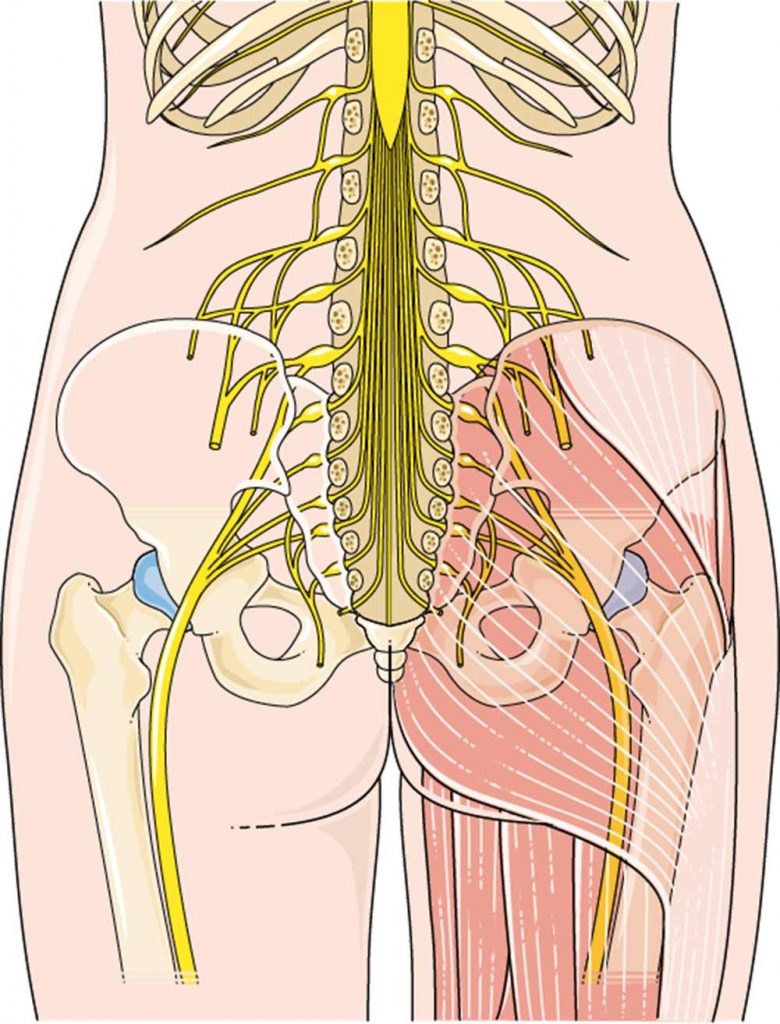Sciatica
![]()
Call (703) 520-1031 or use the form below to send us your contacts.
What is Sciatica?
Sciatica is a term that describes pain, numbness or weakness that radiates along the path of the sciatic nerve from the lower back to the buttocks and leg. Typically, sciatica affects only one side of your body. Another term that refers to sciatica is lumbar radiculopathy.
What Are Sciatica Causes?
Causes of sciatica include:
- Lumbar herniated disc. It occurs when a disc’s material leaks out and irritates or compresses the contiguous nerve root.
- Degenerative processes in lumbar discs. Our discs do age but when it is degenerative, the nerve roots are irritated by inflammatory proteins and weakens the disc.
- Isthmic spondylolisthesis. This happens when the bone that forms the front of a vertebrae moves onto the one below. This happens because of a small break in a piece of a bone that connects the two joints on the back side of the spinal segment. As a result, the nerve root is pinched and causes pain.
- Lumbar spinal stenosis. This happens when the spinal canal narrows and the nerves are pressed, causing sciatica symptoms.
- Sacroiliac joint dysfunction. Sacroiliac joint inflammation can also irritate nerves, which lies on top of the sacroiliac joint, leading to sciatica-type pain. Although this is not a pinched nerve, it can feel like sciatica.
Sciatica Symptoms
Sciatica pain can range in its severity, depending on a degree of nerve roots irritation. Usually, the painful feelings in the leg are considerably worse than pain in the low back. Often, Sciatica symptoms are described as searing or burning pain and even as electrical shocks running down the leg. Combination of the following symptoms is most common:
- Constant pain in only one side of the buttock or leg, that continues along the path of the sciatic nerve (down the back of the thigh and into the lower leg and foot).
- Pain that worsens when a patient is standing or sitting.
- A so-called “pins-and-needles” sensation and numbness in the leg.
- Pain or numbness in the toes.
- Lower back pain (but not more severe as leg pain)

Sciatica Treatment
Sciatica is just a symptom that can be caused by various diseases. Therefore, treatment or correction of primary condition or abnormality, which irritates nerve roots and leads to sciatica, is necessary.
These treatment options may include surgery, anti-inflammatory drugs, oral steroids or epidural steroid injections. In some cases, physical therapy and exercises may be helpful.
Sciatica FAQ
What kind of doctor treats sciatica?
If sciatic pain lasts for more than 2-3 weeks, it is wise to make an appointment with a neurologist or a spine specialist. A neurologist specializes in the human nervous system. Start by making an appointment with a general practitioner who will assess your condition and decide if seeing a specialist is the best next step.
How long does sciatica last?
An acute sciatica episode usually lasts for 1-3 weeks, but it could last for up to eight weeks. Some people experience intermittent episodes, meaning sciatica comes and repeatedly goes over time. However, sciatica can become chronic, which is unrelenting pain. Chronic sciatica lasts for two months or more and could be a symptom of a spinal condition like a lumbar herniated disc or lumbar degenerative disc disease.
What is the most effective pain relief for sciatica?
There are over-the-counter and prescription medications that help people manage sciatica pain. Over-the-counter medications include aspirin, acetaminophen, NSAIDs, and naproxen. Prescription medications include muscle relaxants, antidepressants, and pain medication. However, some people use medications only as a last resort.
The most effective non-medication pain management approach is doing exercises that target sciatic nerve pain, such as stretching, walking, and exercises that improve core muscle strength. A doctor may recommend seeing a physical therapist who can teach you the best practices for sciatic nerve pain.
What can make sciatica worse?
There are several things that can make sciatica worse.
Poor posture while sitting for long periods of time places pressure on the lower spine, increasing sciatica pain. Being overweight also places pressure on the lumbar spine (lower spine).
Other ways to make sciatica worse include:
- lifting items with a posture that uses the back muscles instead of the legs;
- doing exercises that put pressure on the lower back;
- not getting enough exercise to keep the lower back muscles strong;
- wearing shoes that shift body weight forward.
Twisting, coughing, or sneezing hard and straining can increase pain too. There is also ongoing medical research to determine whether emotional anxiety or stress play a role in the amount of pain felt with sciatica.
What triggers sciatica?
The sciatic nerve is a large nerve that branches from the lower back into the hips and buttocks, branches out again at the knees, and runs down each leg to the feet. Sciatica refers to pain that is associated with the sciatic nerve on one or both sides. It is usually triggered with a herniated disc in the lumbar spine, but there are other causes.
They include:
- spinal stenosis (narrowing of the spaces in the spine that places pressure on the nerve),
- degenerative disc disease due to aging or disease,
- spondylolisthesis (one vertebra slips forward),
- bone spurs,
- obesity that leads to pressure on the sciatic nerve,
- tumors and weak back muscles due to lack of exercise.
Even poor posture or wearing high heeled shoes can trigger sciatica because these behaviors lead to spinal misalignment.
